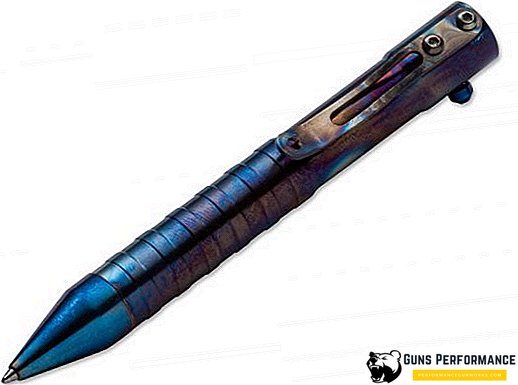Handcuffs are called chained, thrown on the legs or on the hands of arrested or convicted bracelets to restrict their freedom of movement. Shackles are usually iron or steel. Basically, they are used in convoy on vehicles that are not equipped for this purpose or for the movement of crime suspects or offenders on foot.
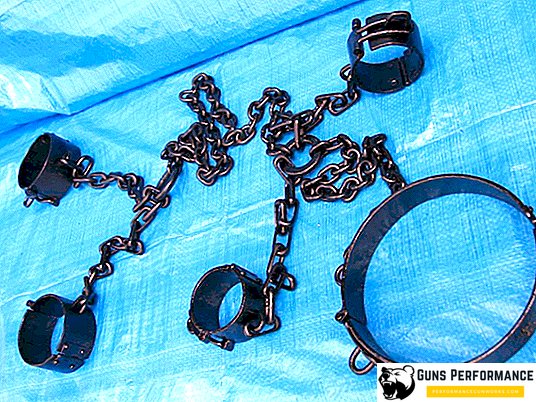
To date, the police in their practice shackles almost do not use. In world practice, for the most part handcuffs or so-called "nanozhniki", which Western manufacturers are traditionally called shackles, despite the significant differences in designs. Modern models are presented in the form of handcuffs of increased size, having a long chain between them and worn on the legs, but there is an option with putting on the arms and legs at the same time.
Due to their universal qualities (suitable for all sizes), a large area of operational use and at low cost, they are still popular in some countries. The shackles of traditional constructions are now used by the Chinese penal system. In addition, the steel shackles from manufacturers may be called nanoscores, while being combined up to a meter in length with a chain of handcuffs.
Distinctive characteristics between the shackles, handcuffs and nanozhniki enclosed in their design features. Thus, steel shackles are intended for long-term wear, and handcuffs with nanozhnikami for short-term. As a result, the shackles are safety-safe, wide and adjustable, as well as unregulated bracelets, locked with locks or rivets, and matched to the size of wrists and ankles.
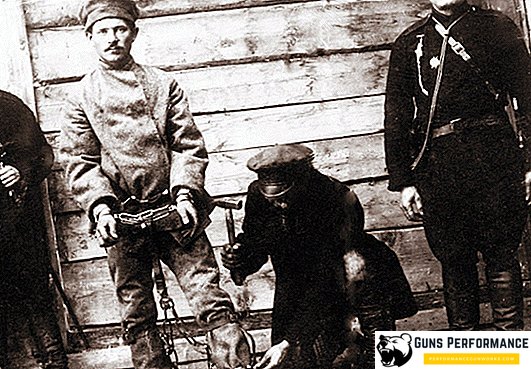
While with handcuffs or nanozhnikami things are somewhat different, they are universal with more traumatic zip up bracelets. The hem in the shackles of the shackles is rounded, and in handcuffs and nanozhniki, basically, it is not provided. Even on the contrary, if the suspect starts sudden movements or tries to free himself from the bracelets, then they crash even more into his limbs, causing pain in these parts. This is especially true of the most modern plastic handcuffs.
The origin of the word shackles
Some philologists believe that the word shackles came to us from the Arabs as "kaydans." Although the Slavic Ukrainian, Belarusian and Polish peoples, it also sounds - "Kaidan". In Russia, they were called "glands".
Historical Mention of Shackles
Perhaps the first leg shackles could appear in the Bronze Age, when mass metalworking arose to some extent. In the British Museum, you can familiarize yourself with the Assyrian bronze shackles found in Nineveh (now, Iraqi Mosul) and dating from the 10th century BC. Mention of shackles and chains can be found in the biblical texts of the Old Testament.

First, the shackles were fixed in closed positions with rivets, which were removed only by chopping them in the forge. Ancient Rome (I-II century AD) was marked by the first shackles that had built-in locks. They also became a prototype of the current handcuffs, in which the guilty people were quickly chained, when being transported or chained for work. In addition, the Romans acquired and foot fetters.
At that time there were also women's shackles with the length of chains of hand-made bracelets 15-25 cm and 35-45 cm of foot bracelets. Thanks to this, slaves could do all the housework around the house, but they could not attack the owners or run away from them. At the same time, there appeared some semblance of the current “strict” (hinged) handcuffs. These were hand-shackled pads with bracelets, which were locked, firmly fastened together without using chains.
When metal processing went down, they refused to use shackles with rivets - it was more convenient with a lock. Invented in 1912, handcuffs with universal bracelets, as well as massively constructed prisons led to the abandonment of the shackles of traditional designs. It just didn’t need to keep convicts chained all the time.
Use of shackles in the police and penitentiary systems
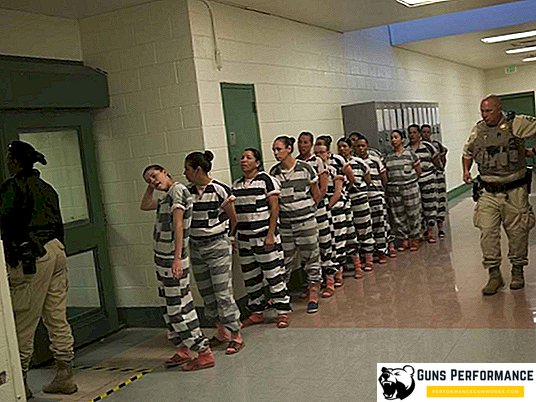
The police and the executive systems in the West are now actively used by the kandals (mainly by the artists). So in European countries (in France and Germany) they are used in convoy of particularly violent convicts. Often suspects may be at a court hearing with police shackles in their arms and legs. This is a design of handcuffs connected by a chain to nano-blades; sometimes they are attached to a chain on a belt. In modern Russian practice, the shackles are not used by any systems.
Western police experts have noted the relevance of extensive use of shackles. They believe that the more a criminal is limited in his actions, the less thoughts he has about escaping.
"Chain gangs" in the Estrella women’s American prison
In Arizona, there is a prison Estrella. She is widely known for the fact that women prisoners are serving their sentences under the program "Chain Gang" - literally "Chain Gang". The program assumes the collective execution of unqualified jobs by the prisoners, in the process of realization of which they are chained together with the help of a long chain.
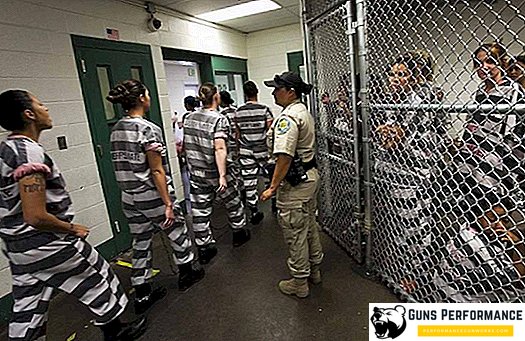
Such a systematic approach was traditional for the southern American states in the XIX-XX centuries, until 1955, when it was canceled as inhuman and not in keeping with the spirit of the new era. However, in 1995, it was again used in men's southern prisons, and at Estrella they went even further and extended this approach to women. The reason was simple: men and women in the United States have equal rights and thus no one should receive concessions.
According to the existing rules, this program is called “Last Chance” and is assigned only to those women prisoners who serve their sentences of up to one year for “frivolous” articles.
Strange as it may seem, but the punishment of "chaining off one chain" and the free execution of unqualified work by female prisoners is chosen absolutely on a voluntary basis. And for very simple reasons. The sentences of the courts, despite the rather short time, most of them are subject to strict conditions for serving the sentence (something like the Russian ShIZO). This mode assumes a rigorous sock of the robe "striped", a permanent stay in cramped cells for 23 hours a day with scant two meals a day. And many other restrictions.

According to the Chain Gang program, five prisoners bound together in one long chain, jointly doing derogatory work, may get rid of the desire to break laws in the future.


